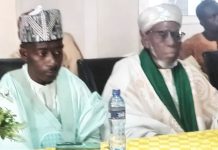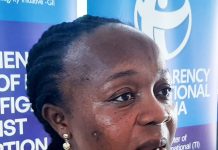
The proposed Gyamadudu Museum at Kwabre Hemang in the Ashanti Region, which construction started in 2020, is 90 percent complete.
The Museum, together with a Community Centre, is expected to be commissioned by the close of the year, Nana Apau Wiafe Ababio Sanwoansan, Chief of Hemang and the brainchild of the project, has announced.
When completed, the Museum will add to the existing ones in the Ashanti Region, and Ghana in general, to help preserve the cultural heritage of the people of the Ashanti Region and sustain traditional norms, customs, practices, and usage as his legacy.
The Chief noted that heroes in their own rights abound in Ghana, and all traditional areas which should be honoured, hence, the establishment of the Museum as a way of honouring such personalities who have contributed to the development of our society.
The Gyamadudu Museum, which sits on a 10-acre piece of land, comprises nine interlinked domes to accommodate precious cultural exhibits, collections, and artifacts.
It has spaces for statutes and images of Ashanti Kings and Queenmothers and eminent personalities, including the occupant of the Golden Stool, Opemsuo Otumfuo Osei Tutu II, the Asantehene, Nana Nyarko Kusi Amoah, the first Asantehemaa, Otumfuo Opoku Ware II, and the legendary Nana Yaa Asantewaa of Ejisu.
The Museum also has a place of honour for Statesmen like Osagyefo Dr. Kwame Nkrumah, Ghana’s first President; Nelson Mandela of South Africa; Col. Mummer Gaddafi of Libya, and Emperor Haile Selaisie.
Images of freedom fighters across the globe would also be featured prominently within the walls of the Museum, decorated with Adinkra symbols.
Among the collections at the Museum are Centre for the production of designer Kente cloths and African stool regalia to add value to such cultural items for packaging and branding.
River Anyinasu, which passes through the designated Museum area adds to the side attraction, besides a space for showcasing the Slave Trade which the Ashantis reportedly resisted.
Along the Anyinasu River is a cottage which walls are dedicated to African Americans who visit Hemang periodically as their home of origin.
The Gyamadudu Museum comes seven years after Nana Appau Wiafe Ababio Sanwoansan had ascended the Ekuona Apau and Brefo Stool of Hemang in the Afigya Kwabre South District as Chief on June 22, 2015, succeeding Nana Owusu Brefo II, who died in 1995.
He has since October 8, 2017 constructed a befitting new Palace for the community from his own resources as his personal contribution to the development of the town which was engaged in 19 years of a chieftaincy dispute.
The Hemanghene has also provided a fence wall around the royal mausoleum situated on an acre of land, and renovated a six-unit classroom block of the Roman Catholic Primary School at Hemang, at the cost of GH¢60,000, as well as painted the local Junior High School.
The Chief also presented 50 dual desks to the school to furnish the renovated school and supplied a quantity of branded exercise books for distribution to schools in the locality.
He intends to embark on a water project and the construction of ceremonial durbar grounds in a community centre project which is likely to be commissioned along the Gyamadudu Museum soon.
Nana Apau Wiafe Sanwoansan expressed gratitude to Madam Sunderland Adwoa Dawn, Executive Director of Bridge-To-Africa Connection (BTAC), and its circle of partners and supporters for being the backbone of the Museum project, which is now a centre of attraction for all visiting African Americans to Ghana.
The Hemanghene has also extended appreciation to the Asantehene, Otumfuo Osei Tutu II, for giving him the chance to serve and promote Asante culture in his own small way.
Nana Ababio Sanwoansan, who hates to see Ashanti customary practices adulterated, has appealed to all chiefs to promote our cultural heritage and move away from the dominance of western culture by preserving cultural norms and values in their respective areas.
The Chief of Heman encouraged Africans and Ghanaians to cherish their traditional and culture by adding value to culture and showcase their inheritance for the benefit of future generations.
He said the African should count himself blessed for being born an African.
He encouraged colleague chiefs to replicate such projects in their traditional areas to bring meaning to the oral tradition and history of Asanteman, as well as create employment opportunities for the youth, while boosting tourism to increase foreign exchange earnings.
Nana Ababio Sanwoansan particularly appealed to the Ejisumanhene and the Ejisu Queenmother to work for the preservation of the historical values of the legendary Nana Yaa Asantewaa.
The Hemanghene bemoaned the dismantling of the Yaa Asantewaa statue along the Accra-Kumasi road at Ejisu, and urged the chiefs and people to restore the image as soon as possible, as a source of tourist attraction to the town.









